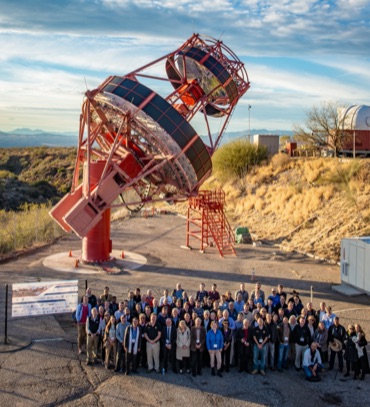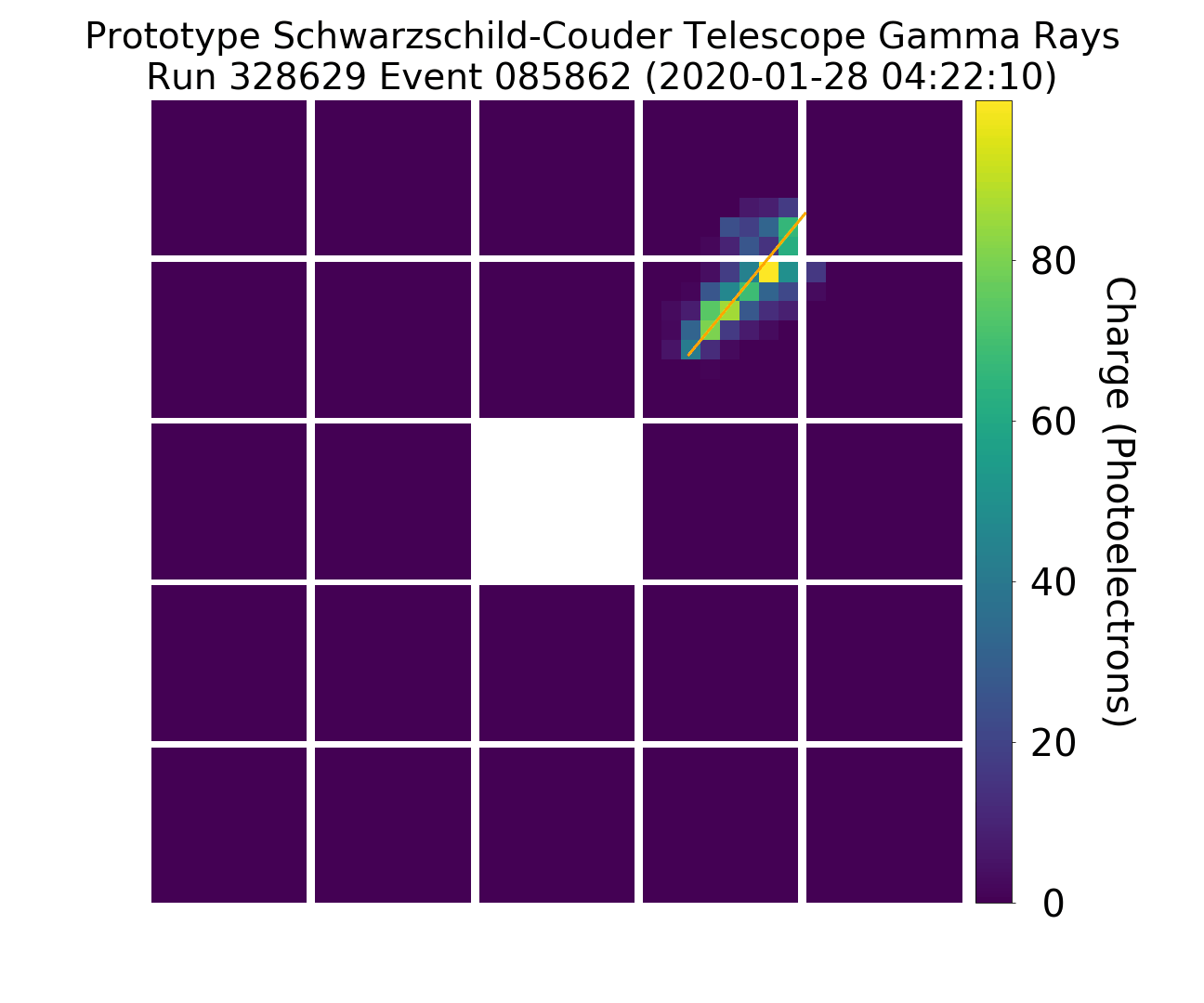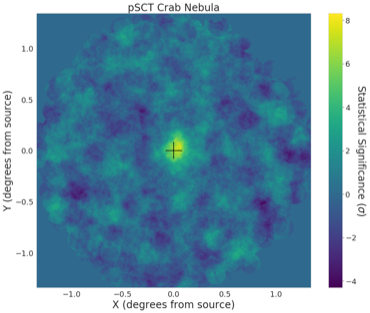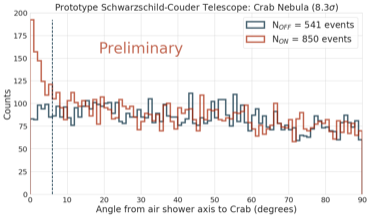Prototype CTA Telescope Detects Gamma Rays from the Crab Nebula
Short Summary
Prototype Schwarzschild–Couder Telescope (pSCT, see Fig. 1), one of prototype telescopes developed for the Cherenkov Telescope Array (CTA) project, observed the Crab Nebula and successfully detected very-high-energy gamma rays from the object with a statistical significance of 8.3σ (Figs. 2–4). The viability of two new technologies used in pSCT, the Schwarzschild–Couder optical system with a large field of view of 8 degrees and a small camera pixel size of 6 mm realized by using silicone photomultipliers (SiPMs), have been proved by this observations. This result was press released at the 236th meeting of the American Astronomical Society.
Activities in the ISEE CTA Group
Professor Hiroyasu Tajima and Jr. Associate Professor Akira Okumura have been actively working in the hardware and software development of several different CTA telescope designs. For the pSCT development, the ISEE CR group contributed in development of SiPMs, development of waveform sampling and readout electronics, camera control and data acquisition software development, and ray-tracing simulation of the telescope for more than 10 years. In 2019 we inaugurated the completion of the pSCT telescope and its camera as shown in Fig. 1.
In the CR group, we have mainly contributed the following development components for SCT.
- Development and characterization of the silicon photomultipliers (SiPMs) used in the focal plane camera
- Development of the integrated circuits for trigger and waveform sampling of the SiPM output
- Development of camera control and data acquisition software
- Ray-tracing simulation of the Schwarzschild–Couder optical system

Detection of Gamma Rays from the Crab Nebula
After the inauguration of the pSCT in January 2019, we achieved the first light of the telescope in the same week, observing atmospheric Cherenkov radiation generated in air showers induced by high-energy cosmic rays. We then observed the Crab Nebula by gamma rays and detected very-high-energy gamma rays from the object at a statistical significance of 8.3σ.
The Crab Nebula is one the most famous objects emitting high-energy gamma rays. It is very frequently used for validation and calibration of gamma-ray telescopes. In our observations, we have proved the viability and performance of the pSCT. The observation result was press released at the 236th meeting of the American Astronomical Society.


